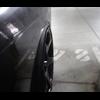Hks Low Mount Flange Change
Announcements
-
Similar Content
-
Latest Posts
-
There are guys on Facebook under, Infiniti Owners Australia https://www.facebook.com/share/g/1Z3RbPqx4k/?mibextid=wwXIfr What Whp are you after and I can help, and join this Q group in the states. https://www.facebook.com/share/g/19A59cN3JR/?mibextid=wwXIfr
-
Does any of you guys have instagram pages for your builds? Keen to see some Aussie builds. I still can't figure out how to post photos in here.
-
You can Remote any of these VR30..globally Check: AMS Performance | Racebox | Sonic Tune | Soho | Z Motorsports | Specialty Z Performance Parts | AMS | Z Motorsports | Boosted 6 | Exhaust | Fast Intentions | ARK | MBRP Motordyne | Borla There is someone in Sydney with 650whp I am at 430whp without flex fuel, but FBO & Flex-fuel will push you to 500whp!!
-







Recommended Posts
Create an account or sign in to comment
You need to be a member in order to leave a comment
Create an account
Sign up for a new account in our community. It's easy!
Register a new accountSign in
Already have an account? Sign in here.
Sign In Now